
The science of preserving nature since 1964
Please contact us for a FREE Consultation

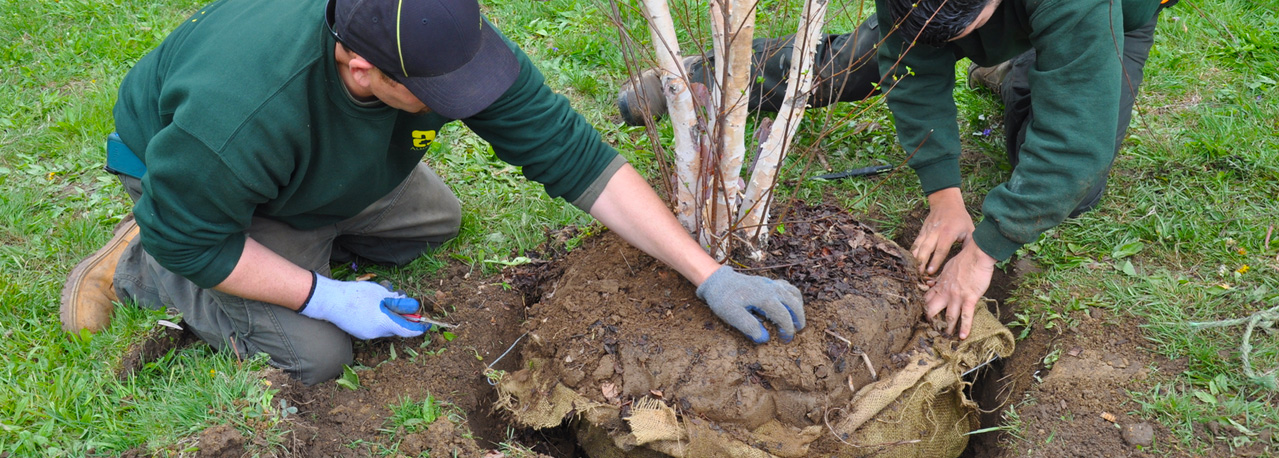
Benefits of Planting Trees
According to a book published by the American Forestry Association, "a single tree provides $73 worth of air conditioning, $75 worth of erosion control, $75 worth of wildlife shelter, and $50 worth of air pollution reduction. Compounding this total of $273 for fifty years at 5% interest results in a tree value of $57,151."
There are many benefits to planting trees. They produce the oxygen we need to breath, provide shade, reduce pollution, act as a sound or wind barrier, decrease energy costs, add beauty to our landscapes, and improve our quality of life significantly. Trees have the potential to live for hundreds of years —but in our urban environments, because of the conditions imposed on them, they rarely have the opportunity to do so.
Most people agree that trees have a value that is both monetary and aesthetic. A tree appraiser can give you the value of a particular tree. There are even apps that calculate the value of trees in a community. Planting a tree is something that has a lasting value but it can also be a lifelong commitment. It is therefore very important to choose the correct tree for the right site, plant it properly, and give it the required care so it can grow strong and live for a long time. Here are some points to keep in mind before planting a tree...
Choose the Site and Tree Carefully
Ask yourself why you are considering planting the tree. Is it for privacy? To increase property values? As a wind barrier or shade? For its fall coloring? For its fruit? As a bird habitat? Combine this with information about the site where you want to plant the tree. How close are the buildings, the sidewalk or the street? Are there overhead or underground utilities? Is there room for roots and/or branches to grow? Is there enough sunlight? Is the soil around wet or dry? Is it excessively windy or exposed to salt runoffs?
When it comes to choosing the tree, look at the options available based on your region. Think about the space the mature tree will occupy. Also consider roots that could grow into sewer lines, sidewalks or lawns? Height and crown size are essential considerations as well as adequate soil volume for that species tree.
Trees can be either deciduous or evergreen. Deciduous trees shed their leaves in the fall and the branches are bare in winter. However, in fall, their leaves are usually brilliantly colored — especially just before they drop down. Evergreen trees and most shrubs retain their foliage all year-round. They can have broad leaves, such as southern magnolia, or needled foliage, such as pines. Small deciduous trees grow quickly and are good for providing privacy and vibrant fall colors. They are usually planted closer to the house. Larger trees take longer to grow but are stately and provide shade. A beautiful mature tree adds value and character to a property. Evergreen trees look beautiful all year-round and create privacy, as well as natural sound, snow, and wind barriers and are best situated on the northern side of the property.
When and How to Plant
The best time to plant trees is in the spring and early fall -- but when weather conditions allow, it can be done in early summer as well. Before you start digging, check with your utility company to see if there are any underground lines nearby because you can be liable for any damage.
Prepare the site by marking a circle approximately 3 times the diameter of the tree's root ball. Dig a hole inside the circle with a depth as deep as the root ball.
Place the tree upright in the center of the hole. Remove any covering from the root ball. If it is in a fiber pot, tear off the sides; if it is balled and burlapped, cut the rope around the trunk and remove the burlap.
Shovel the excavated soil back into the hole. Continue until the roots are covered. Do not tramp and flatten the soil with your feet or a shovel. Rake the soil around the tree and add a layer of mulch.
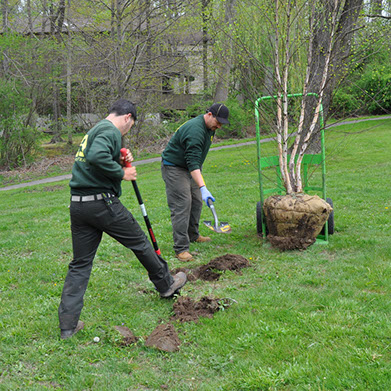
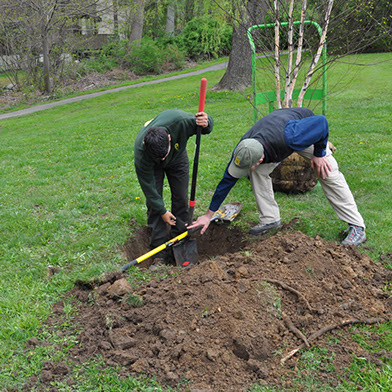
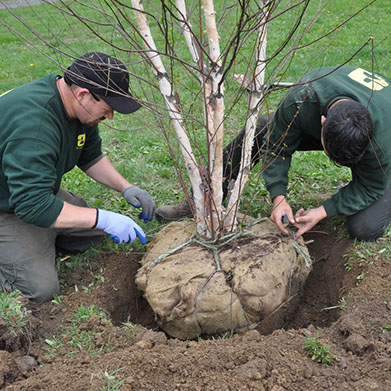

Planting a tree is a relatively simple process -- but it needs to be done correctly. If you are not sure about which tree to plant or if the location you have chosen to plant the tree is safe and appropriate, please contact Almstead.
Whether you're seeking a replacement or adding to a landscape, an Almstead arborist can find the right tree for your location and ensure that it's planted correctly.
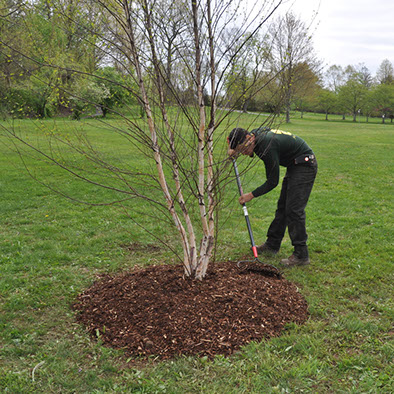
Lower Westchester 914-576-0193 I Upper Westchester 914-741-1510 I Fairfield County, CT 203-348-4111 I Bergen & Passaic County, NJ 973-636-6711
Make a Payment I Careers at Almstead I Commercial Care I Tree Care I Lawn Care I Plant Health Care I Organic I Consulting I Nursery & Mulch I Insect Control I Newsletter I Contact Us
Copyright 2023 Almstead Tree, Shrub & Lawn Care Company I All rights reserved I Content on this site cannot be used without permission.


